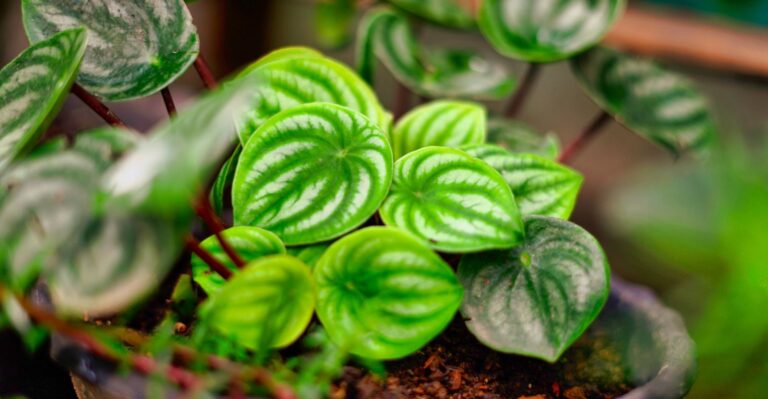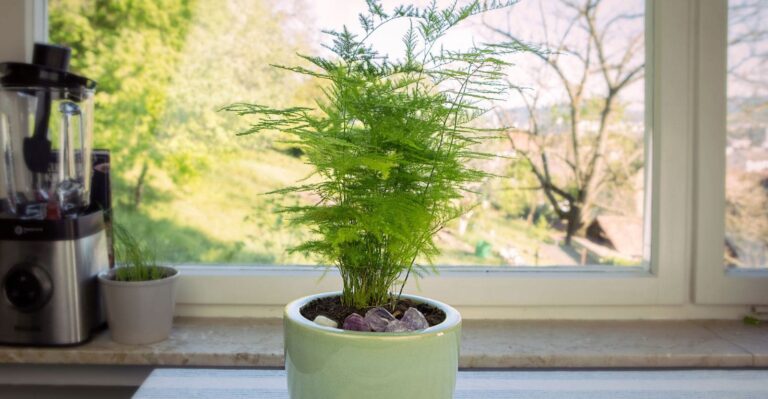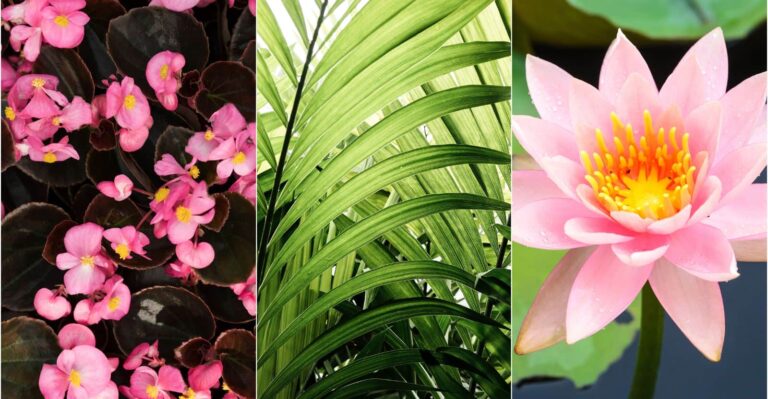Amazon has put together some great Home Gift Deals – save money and get your shopping done at the comfort of your home! Click here to see deals on Amazon
Imagine walking in your yard without needing to cover yourself with bug sprays or wear full clothing on hot summer days.
The feeling of walking free in your yard, touching, and smelling beautiful flowers is irresistible.
Grabbing your favorite drink and sitting in a lawn chair enjoying sunbath feels good. It’s the dream, right?
But now, here you’re. Sitting in your house, not daring to venture outside. The reason: Mosquitos, a lot of them.
But it doesn’t have to be this way.
There is a way you can enjoy all those freedoms, and it’s not too hard to do for yourself.
Should you use a mower and cut down all the tall grass from the lawn?
Well, you don’t have to go that extreme. If you’re looking for natural ways to keep those mosquitoes away, you need to know about mosquito repellent plants.
Here are the top easy-to-grow eight mosquito repellent plants.
• Lavender
• Rosemary
• Lemon Balm
• Eucalyptus
• Chrysanthemum
• Marigold
• Geranium
• Petunias
Also, remember that mosquitoes are not only a small annoyance but also a significant cause of spreading viruses and disease. I’m sure you have heard about the Zika virus found in West Nile.
Many commercial mosquitoes and bug spray contain harmful chemicals that are toxic to children and pets. In this article, I have researched and included 23 most effective and natural mosquito repellents that you can grow indoor and outdoor.
What plants are useful to keep mosquitos away?
There are several plants whose leaves and flowers, when rubbed on the body, keep mosquitos away. Below is a list of plants that you can grow indoor and outdoor to keep mosquitoes away.
1. Rosemary (Rosmarinus Officinalis)
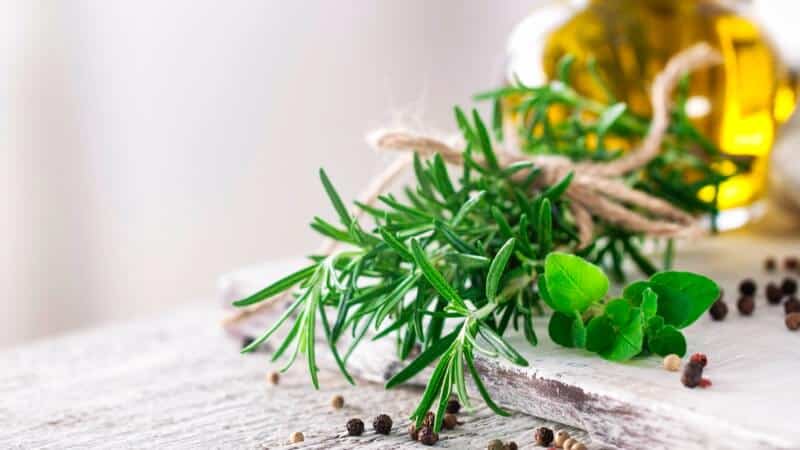
Rosemary is a prevalent seasoning herb used in many dishes. It’s highly effective in keeping insects and mosquitoes away from you.
To grow rosemary, you need full sunlight and well-drained soil. You can grow it in the USDA plant zone of 8–10 and raise it up to 3 to 5 feet high.
Rosemary gets small pale blue flowers and has spiked leaves. These are suitable to plant at garden borders, in hanging baskets, and hedgerows.
2. Basil

Basil is a well-used herb for cooking, but its strong scent also repels mosquitoes. Basil has small but a bit broader leaves that make it great to plant around your patio, porch, or other sitting areas.
Several varieties of Basil can be planted, but lemon and cinnamon basil are the most effective in repelling mosquitos and other insects.
Basil grows annually in a warmer climate, but it self-seeds and regrows. You need to maintain moist soil, proper drainage, and provide full sunlight. You can grow basil in pots, containers, or raised garden beds.
3. Peppermint
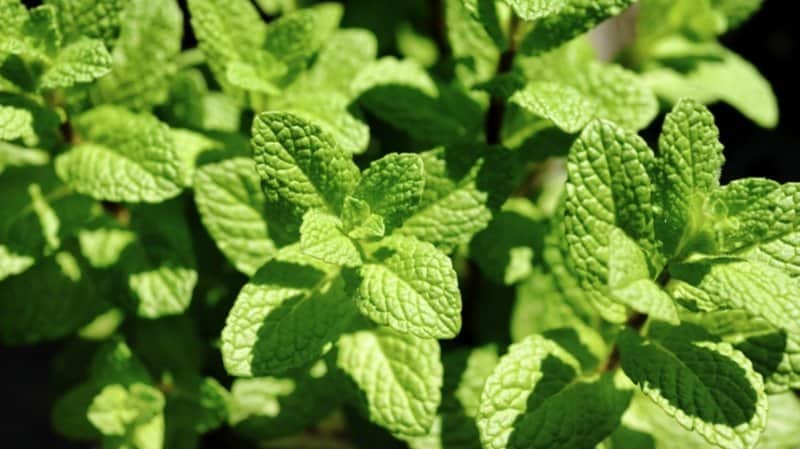
Peppermints are good mosquito repellents as their strong fragrance keeps insects and rodents away. it’s a good bug-repelling indoor plant from the mint family that you can plant in pots or small containers.
You can also rub peppermint leaves at the mosquito-bitten area to get relief from the itch. To grow peppermint, plant it in the damp soil where it gets full sunlight.
Peppermint is a small-sized herb that grows 1 to 3 feet tall and repels mosquitoes and spiders. You can also place it in the basement to deter spiders.
4. Sage
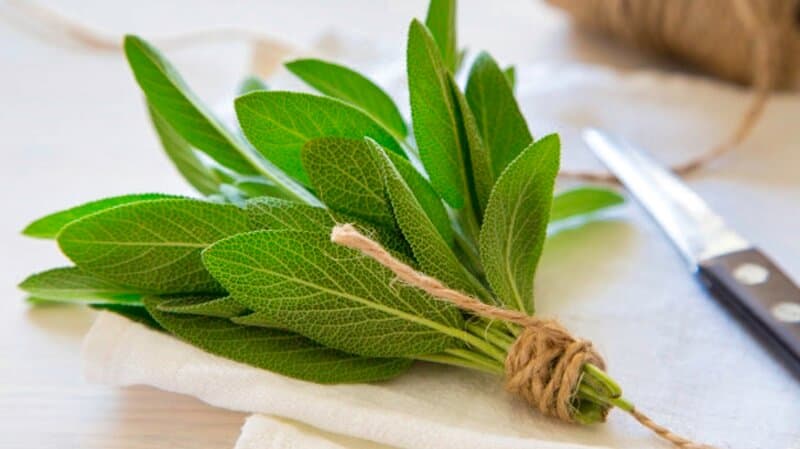
Sage is also known as a stink bush and bitter boss. For the yards and bedrooms, sage is the best natural mosquito repellent. Many people use it for burning or making incense out of it.
5. Lemon Balm
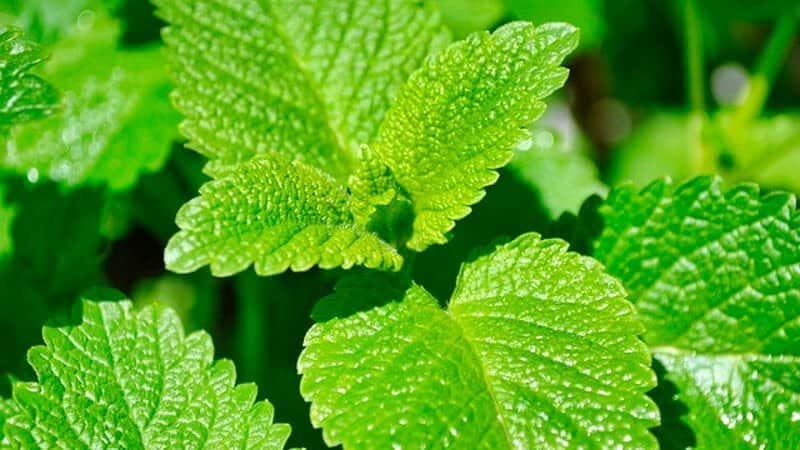
Melissa Officinalis, generally known as Lemon Balm from a mint family, is a herb that reduces stress, provides relief from stomach aches and improves sleep. It’s also an excellent mosquito and flea repellent.
We recommend that you plant lemon balm in a container due to its invasive tendencies. You can get started by planting it in well-drained soil and placing it where it can get full or partial sunlight.
Lemon balm grows up to 2 to 3 feet high and is suitable to grow indoor.
6. Catnip

Catnips are related to mint, and cats love this tiny herb. It contains a feline attracting and mosquito repellent chemical called nepetalactone.
The leaves of catnips contain oil from where it gets a distinct smell. It’s easy to grow, and you can plant it closer to your porch or in the container.
Protect it from felines as they love to munch on it. You can use catnips to make organic mosquito repellent spray. You do it by cutting the stems and leaves into tiny pieces and putting them in a clean jar.
You fill it with vodka and let it settle for 3 to 6 weeks. The alcohol extracts the oil from the plant that you can fill in a spray bottle. Make sure that you shake the jar once in a while to get a proper mixture.
7. Marigold
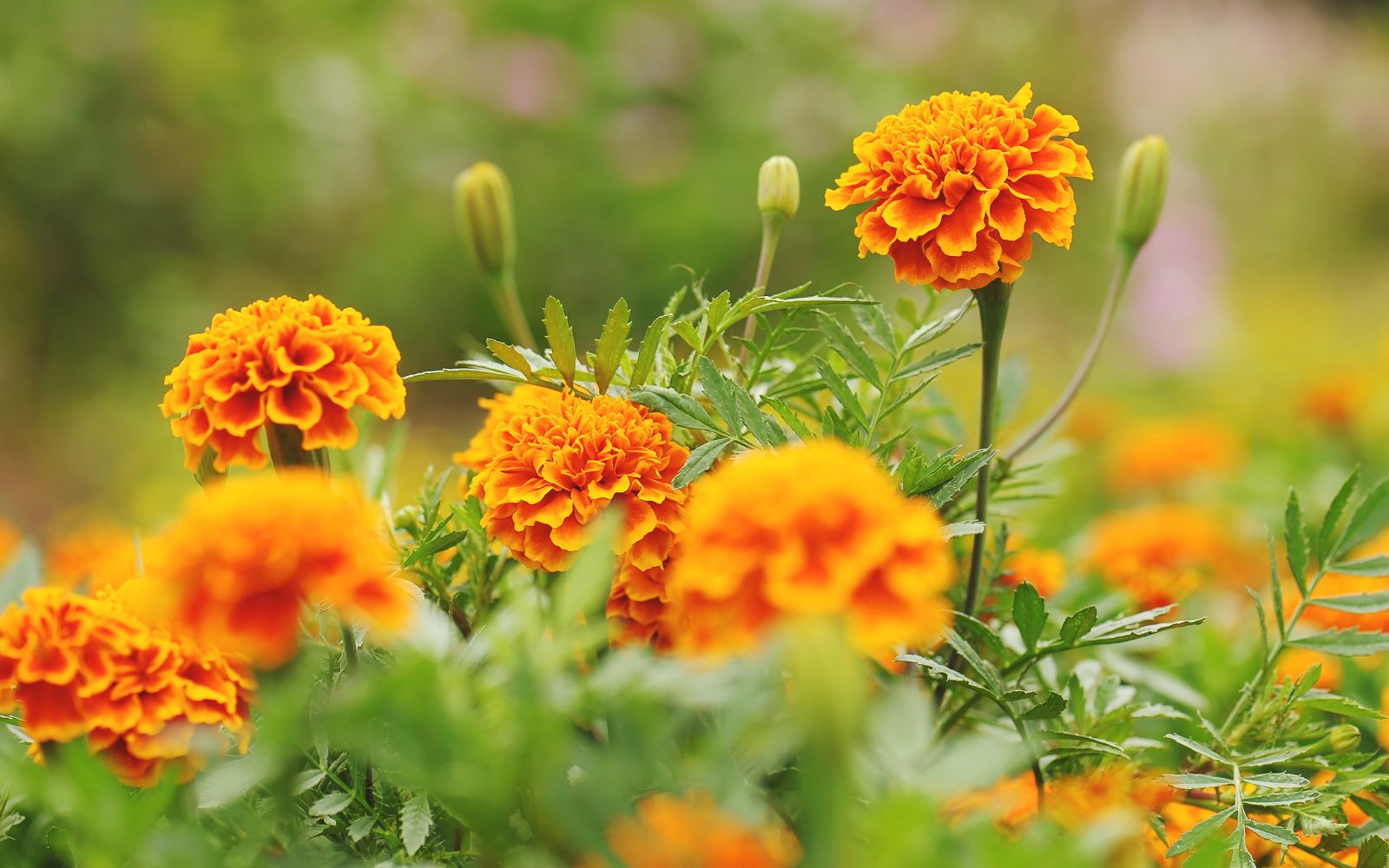
Marigold is a beautiful flower that has a distinct but pleasing smell. Most insects such as mosquitoes, aphids, and animals like rabbits and rats don’t like the smell of marigolds.
This makes it great to plant in the raised garden beds and containers. The growth is easy as long as you provide it with proper sunlight and adequate water.
Marigold is an excellent repellent of nematodes that are tiny worms that attach roots to edible plants. Planting marigold nearby vegetables protects the plant’s roots and helps grow a healthy vegetable garden.
8. Lavender
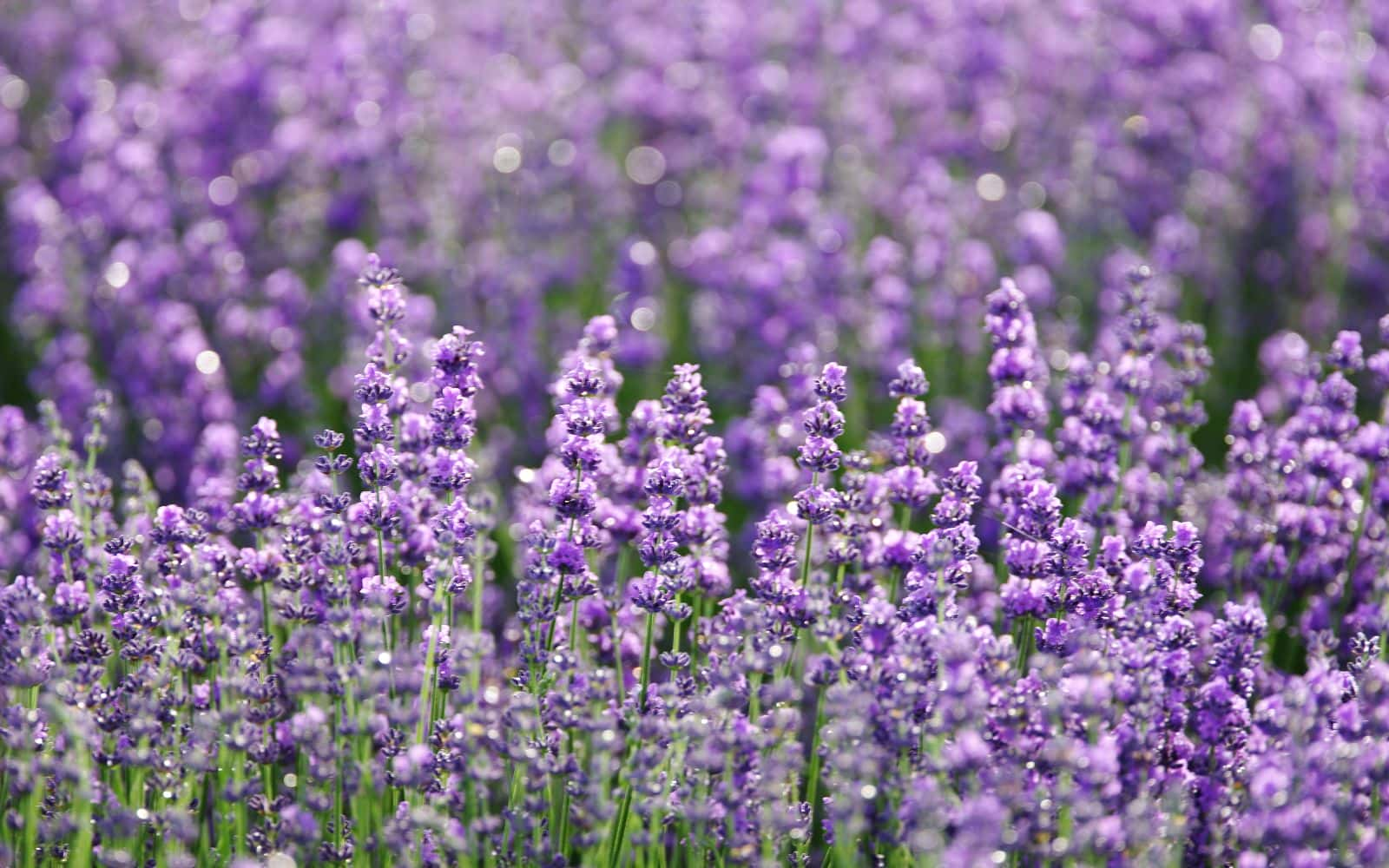
Lavender is a great outdoor plant that keeps insects, moths, and flies away. It has a strong scent that repels mosquitoes. You can rub lavender flowers or leaves on your skin that act as insect repellent.
Lavender blooms a tiny tubular flower and comes in the shade of blue or purple. You can plant it around the garden border or in a container.
It needs full sun and ordinary soil, and the flower blooms in late spring through summer. You can also dry lavender flowers and place them in the closet and wardrobes to repel moths.
9. Garlic
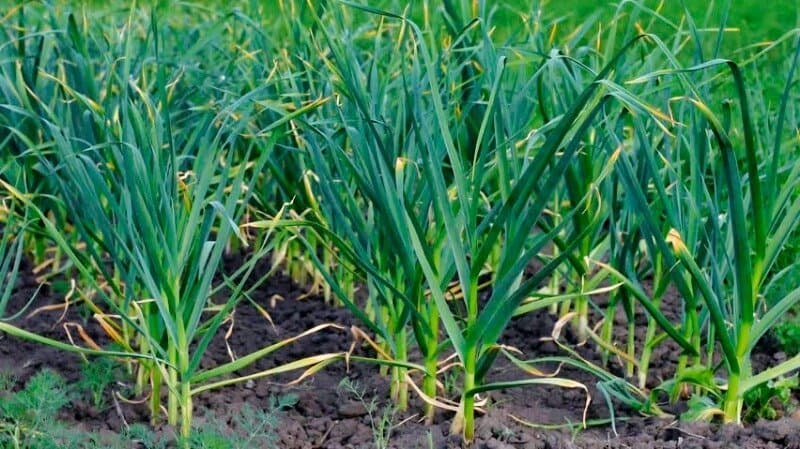
You may know about garlic for its rich flavor and its use in various food recipes. But do you know that garlic is also a mosquito repellent?
While eating garlic won’t repel mosquitoes, but growing will keep the mosquitoes and insects away. If you don’t want to use chemical-based repellents, then rubbing garlic juice on the skin can save you from mosquito bites.
Garlic grows in well-drained soil and needs full sun. it’s a small size plant that grows up to 1 to 2 feet tall. Garlic also repels aphids and ants while giving you so many health benefits.
10. Floss Flowers (Ageratum Houstonian)
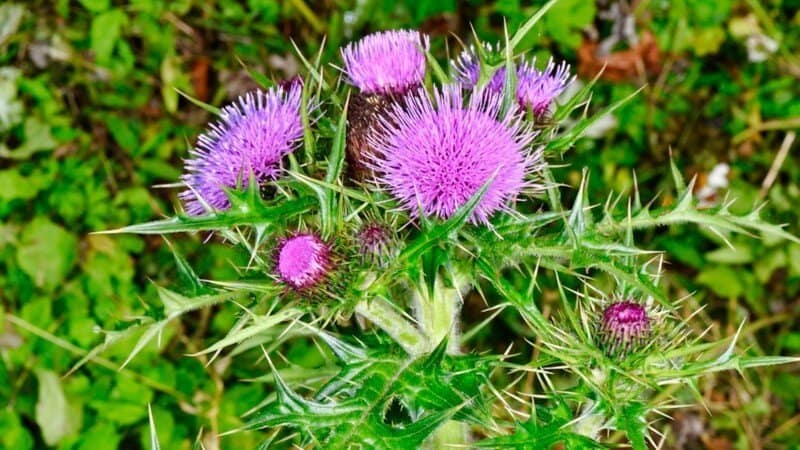
Floss has attractive blue color flowers that grow annually. But it self-seeds, and with proper care, it can grow year after another.
Floss is a useful mosquito repellent plant as it’s very robust and frost tolerant. You can plant it in flower beds or a container.
It has a long-blooming season, and its mild frost tolerance can bloom well into late fall and early winters. These flowers have a strong fragrance, but be careful not to touch them with bare skin as some people are allergic to them.
11. Eucalyptus
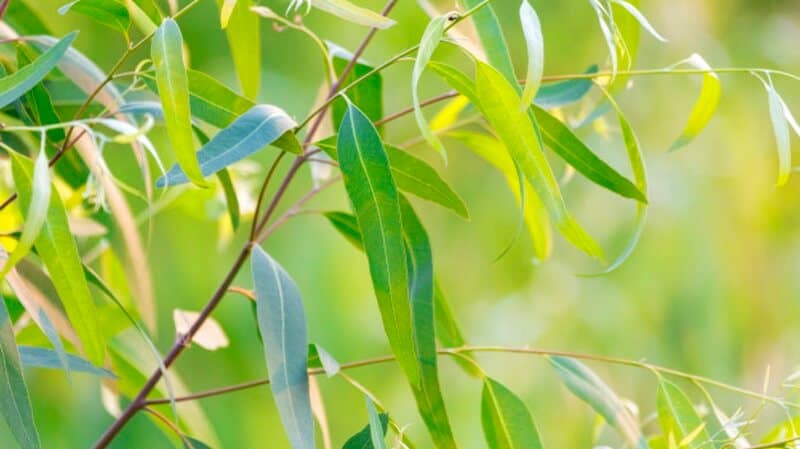
Eucalyptus is a tall mosquito repellent tree and is suitable for planting around the border areas of your garden.
it’s native to Australia, and besides being a mosquito repellent, it also has several medicinal properties. A full-grown Eucalyptus can grow up to 70 meters high.
The flavored eucalyptus essential oils are also used in making toothpaste and joint inflammation medicines.
12. Wild Bergamot

Wild Bergamot is also known as a Bee Balm that has violet color blooming flowers. The flower blooms in summer that repels mosquitoes but attracts butterflies and bees.
It’s known for its medicinal qualities, and many people use dried leaves and flowers in herbal tea. You can plant it in sunny to partly shaded areas in either flowerbed or planter.
You should plant it in a container due to its invasive tendencies. It needs full sunlight and well-drained soil to grow. It grows up to 4 feet tall, and you can use its leave to treat fungal infections.
13 Mums (Chrysanthemum)
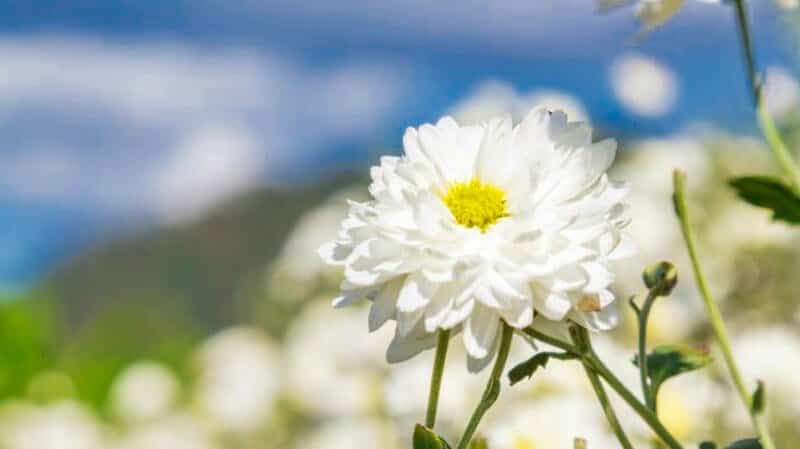
Mum or Chrysanthemum is suitable to repel flower insects and mosquitoes. You can plant it around your home where you don’t want mosquitoes, ants, or fleas to roam around.
The mum’s oil is very potent and used in commercial insecticidal spray. You can plant mums around the garden borders or containers that you can place near the patio or porch.
Growing mums is easy as it requires full sunlight and becomes 3 to 4 feet tall. The mum’s flower bloom in a shade of yellow, pink, white, and red.
14 Citronella Grass
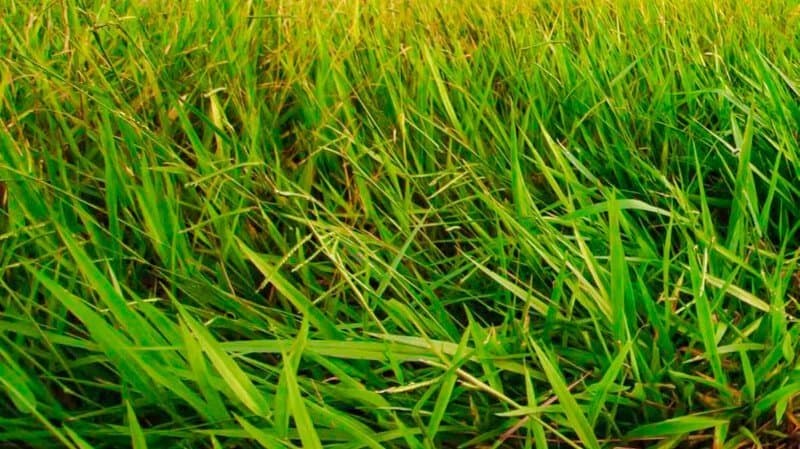
Citronella grass has natural properties to repel mosquitoes. It’s a low-care plant that you can grow quickly in a container. You should protect it from frost and place it directly in sunlight.
There are several variants of citronella grass. When shopping, look for Cymbopogon Nardus or Citronella Winterianustypes types as these are highly effective in repelling mosquitoes.
The Citronella grass works by masking carbon dioxides through its powerful fragrance. Mosquitoes use carbon dioxide sources to locate their prey, and citronella confuses its senses. The citronella oils have antifungal and antibacterial properties.
Due to its strong and distinct smell, citronella is used in scented candles and incense sticks. It grows up to 6–7 feet tall, and you can plant it indoors or outdoor.
15. Alliums
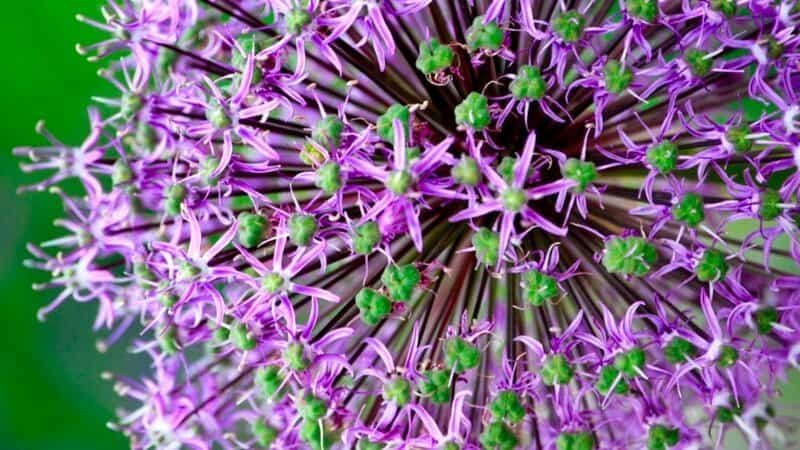
Allium gigantism, also commonly known as Alliums, is a right mosquito repellent plant. It grows in a big bunch of several flowers, and the stalks can grow up to seven feet tall.
Allium repels a wide variety of insects such as mosquitoes, flies, aphids, and slugs. Like Marigold, Allium protects the roots of edible plants from worms.
You can grow Alliums from seed or bulbs but for quick growth plant a bulb.
16. Pennyroyal
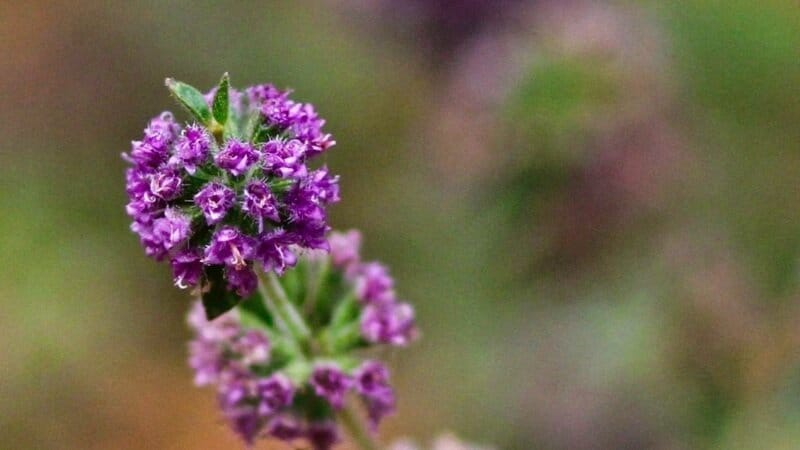
Several parts of the world use pennyroyal, or its variant for mosquito repelling purposes. It has been used since earlier times to deter insects and fleas and has several medicinal properties.
Historically, the vapor of pennyroyal is used to get relief from nasal congestion or cleanse the body from toxins. In some extreme cases, it was used for abortions.
You have to be careful when using pennyroyal oil. It’s very potent and can be harmful to humans and pets. But the plant is safe to have around your home.
You can use the dried leaves of pennyroyal and scatter them around the house to keep mosquitoes and insects away.
17. Geranium
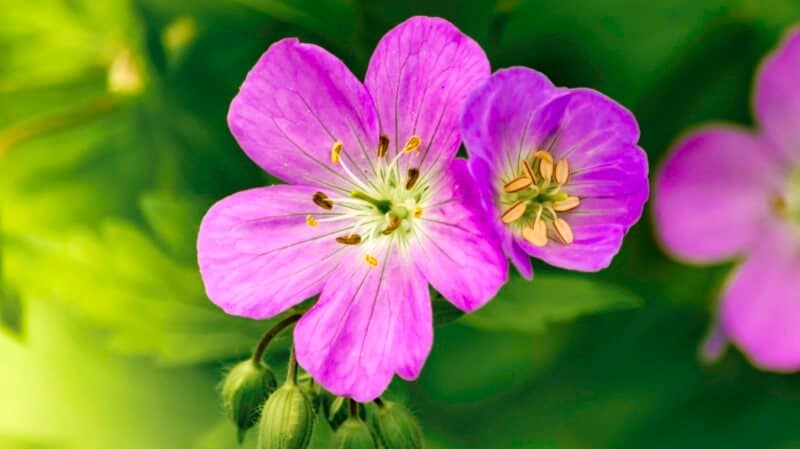
Pelargonium citrosum, also known as Geranium, is a flower blooming mosquito repellent plant. It has a light and dark pink flower with a lemon-like fragrance.
You can quickly grow in sunny and dry climates. The lemon fragrance of flowers makes it ideal for planting in flower beds or vegetable gardens.
It needs full sunlight and well-drained soil. Protect it from excess water around roots as it may cause root rot. The plant grows up to 3 feet high, and the oil helps remove scars.
18 Petunias
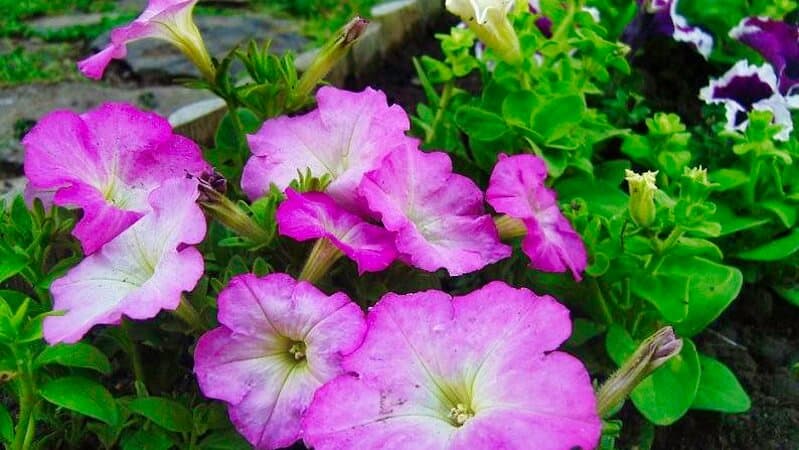
Petunias are beautiful flowers with a wide range of colors. These flowers are also an excellent way to keep mosquitoes and insects away from your home.
You can plant petunias in flower beds and containers. It repels mosquitoes, hornworms, aphids, and leafhoppers.
19 Tansy
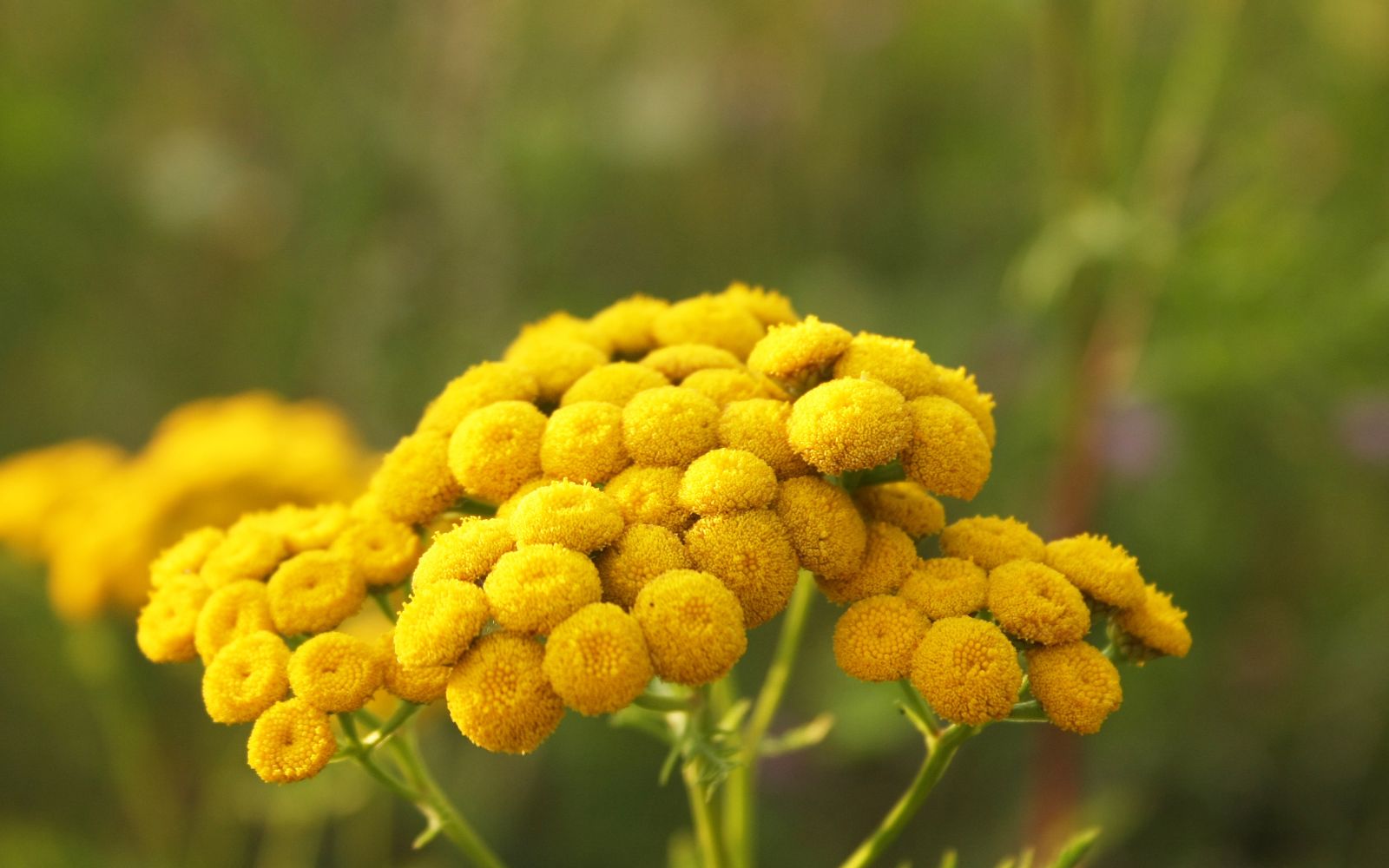
Tansy is a yellow blooming and natural mosquito-repelling outdoor plant. It’s toxic when consumed in large quantities. So, be careful where you plant it. Plant it in a safe and secure area to keep it away from kids and animals.
As usual, it’s the tansy’s oil that is harmful rather than the plant itself.
20 Nodding Onion

Nodding Onion has pink-colored bell-shaped flowers and has properties like garlic. It has a strong flavor that makes it not suitable for cooking anymore.
The plant alone isn’t very useful in repelling mosquitos. But you can rub it against your body to soak the oil that repels mosquitoes.
21. Snowbrush
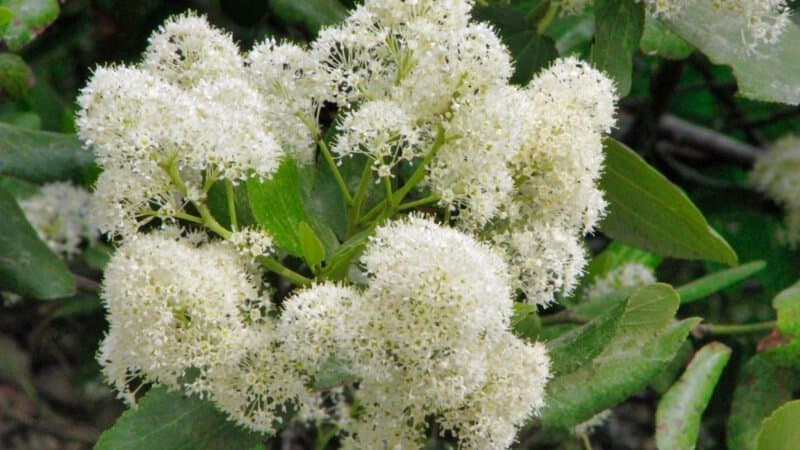
Snowbrush has a sizeable white flower bunch that keeps mosquitos, deer, and rabbits away. The flower and foliage of the snowbrush generate a sticky, sweet balsam fragrance that repels mosquitoes and other animals.
It’s quite a sturdy plant that grows in sunny and well-drained soil areas. You can plant it around the flower beds or a garden border. The white flower act as an excellent backdrop for your garden.
22. Pyrethrum
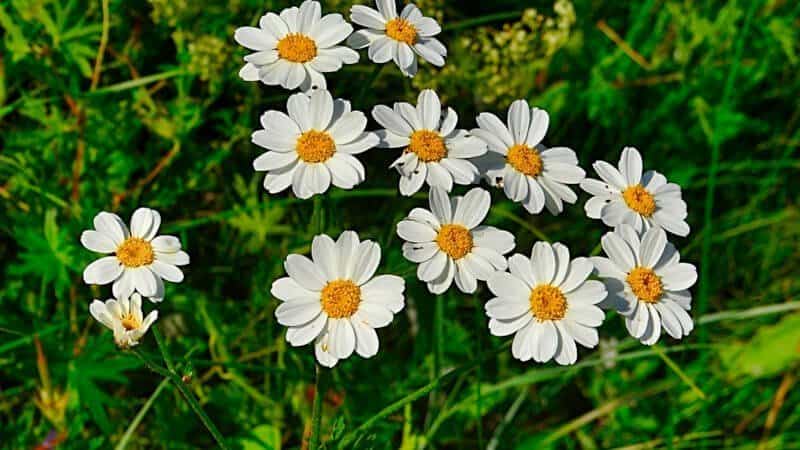
Pyrethrum is also known as a white daisy and has simple looks. It’s very potent and widely used in insecticides.
You should avoid getting in contact with the pyrethrum oil on bare skin.
Take proper care when handling the plant and grow it away from the reach of kids and pets. You can make homemade bug spray by soaking pyrethrum flower heads in warm water for a few hours.
23. Mosquito Eating Plants
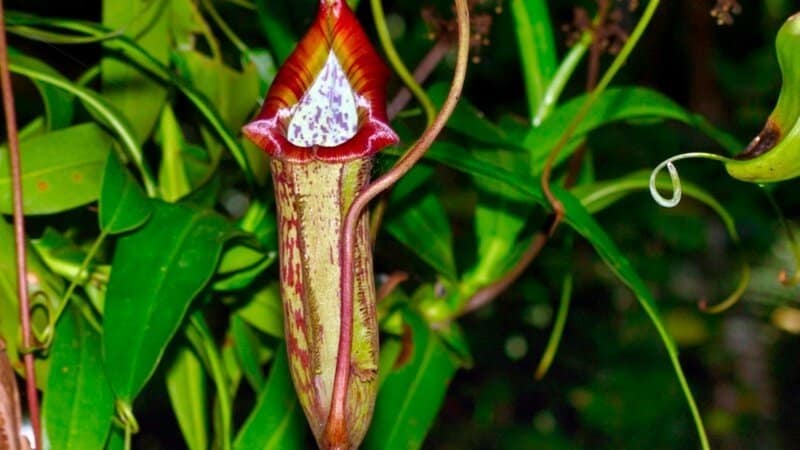
You may know that some plants such as Pitcher nodding, Drosera, and Venus flytraps attract and eat insects.
These plants grow in swamps and well-lit areas. You can hang these near your porch and patio and let it be your mosquito’s guard. If you have standing water or pond area, planting it near there provides much higher success.
Do mosquito repellent plants work?
A standalone mosquito repellent plant won’t be as capable of extracting essential oil out of it and rubbing it on your body. Research published in J Am Mosq Control Assoc found that these plants to be not much useful.
For example, there was no significant difference in the number of mosquitoes landing on human forearms in locations where Citrosum plants were present compared with areas without plants.
If you’re wondering whether citronella or citrosum like plants work against mosquitoes, then the simple answer is “No.”
However, another research, “Repellent Effect of Plant Essential Oils,” found that the extracts from these mosquito repellent plants in the form of oil provided significant protection from mosquito bites.
For example, the use of Eucalyptus oil gave 3 hours of protection to humans. Based on research findings, you can plant it around your home then rub it on your body to get protection from mosquitoes.
What smell do mosquitoes hate the most?
Mosquitoes are sensitive to smell, and they use carbon dioxide emitted by the body to track their victims. Here are five plants that overwhelm mosquito’s sensory system and are used in commercial bug sprays.
- Citronella: Citronella has a strong citrus scent pleasing to humans, but mosquitoes can’t stand it.
- Basil: Basil isn’t good for seasoning, but its strong fragrance keeps mosquitoes away.
- Marigold: Marigold is easy to plant indoor and outdoor. The sizeable yellowish flower has a strong scent to stop mosquitoes from getting nearby.
- Lavender: Lavender has multiple uses, and protection from mosquitoes is one of them.
- Eucalyptus: A tall plant that messes up with the mosquito’s senses. Adding 5% vanillin to eucalyptus oil gives up to 5 hours of protection.
Which perennial plant repels the mosquito most?
Sage is a hardy perennial that is very effective in repelling mosquitoes. It has pale green leaves used as herbs in cuisine. You can rub sage leaves on your body and get relief from mosquito attacks.
While you’re not using it to keep mosquitoes away, you can cook delicious food and use it to give your meal a fragrance.
Other viable alternatives
You should use all the tools in your arsenal when you’re dealing with the disease-spreading mosquitoes. Using a plant alone won’t provide you with the best possible result.
Here are some other alternative ways to deal with mosquito problems.
Frogs and Toads
Mosquitoes breed in standing water, such as a pond or artificial lakes. Frogs and toads eat mosquito larvae and keep the population of mosquitoes in check.
When designing ponds in your garden, build insect holes that invite insects to lay their eggs. It makes it easier for frogs and toads to catch and devour these insects.
Birds
Birds such as chimney swifts, barn, and purple martins eat flies and mosquitoes. You can attract these birds in your garden by placing birds nesting boxes and feeders.
Fish
In ponds or other standing water sources, you can release fish that feeds on mosquito larva. Fish like goldfish, guppies, and Gambusia affinis are very efficient in eating mosquito larvae.
Gambusia affinis is also known as mosquito fish and is used by mosquito control agencies to control mosquito spreads.
Bats
If you live in the countryside, then you can maintain your garden as bats friendly. Bats are very vigorous feeders and can consume up to the bodyweight of insects each night.
Best of all, bats feed at night so they can work while you sleep. You can put bat houses on tall trees to make them safe hiding spots for bats in the daytime.
Turtles
The red-ear slider turtles are suitable for mosquito control as it feeds on mosquito larvae.
Some interesting facts about mosquitoes
- If you want to know where to move, if you hate mosquito, then there are only two such places in the whole world–Antarctica and Iceland. I’m sure Antarctica might be too cold, but Iceland could be a reasonable option.
- The oldest mosquito specimen found was in Canada. It was stuck in a piece of amber that was 79 million years old.
- Do you know how mosquito find their target? Mosquito gets attracted to carbon dioxide that humans and animals exhale.
- Plants process carbon dioxide and release oxygen that helps us to deal with mosquitos. Strong scents from plants such as flowers and herbs confuse mosquitos carbon dioxide sensors.
- it’s a female mosquito that bites and sucks blood. Male mosquitos feed on flower nectars.
- Certain viruses such as dengue carried by mosquitos increase the blood thirst in the mosquitos. The virus enhances the sense of smell in mosquitos.
- Mosquito bite itches as mosquito releases anticoagulant through her saliva. It helps the blood keep flowing while mosquito feeds on it. The body’s immune system responds to these anticoagulants result in itching and swelling around the skin.
- Mosquitos are very lightweight around 2 to 2.5 milligrams and fly at a speed of 1 to 1.5 miles per hour.
- Although small but mosquitos cause more death than other predators such as snakes, sharks, and tigers. A single mosquito carrying the deadly virus can infect more than 100 people.
- According to the World Health Organization, every 45 seconds, a child in Africa dies due to mosquito-spread illnesses.
Conclusion
You can buy these mosquito repellent plants online for indoor and outdoor use. These trees and plants often go on sale to make your garden, and home looks beautiful while keeping insects away.
Let us know what other plants you have used to keep these mosquitos away from your home and garden.
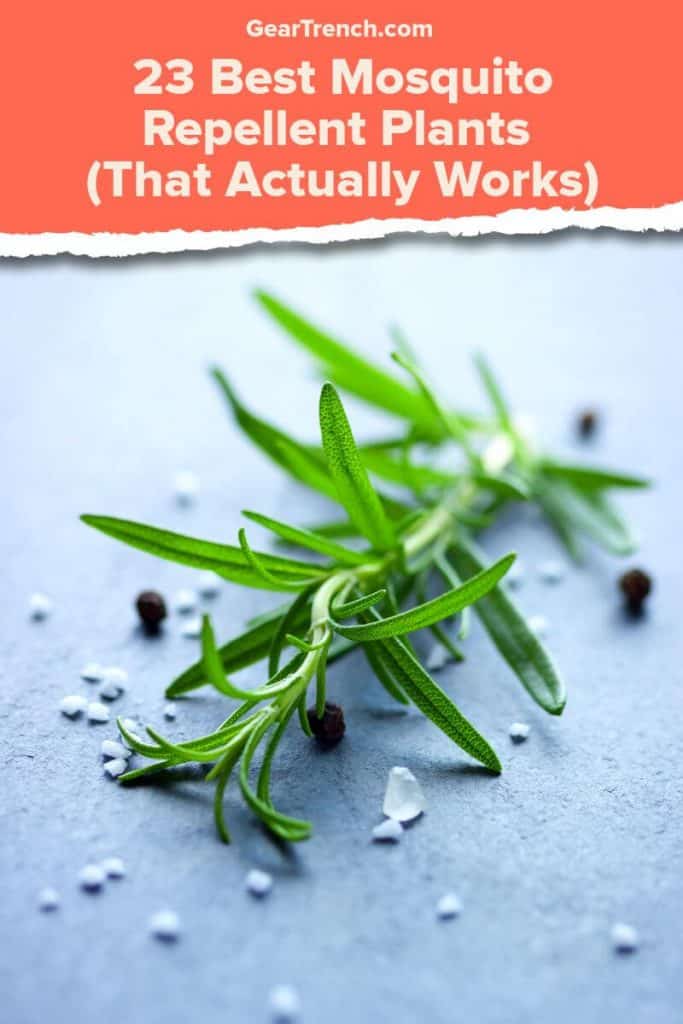
Don’t forget to share this post


